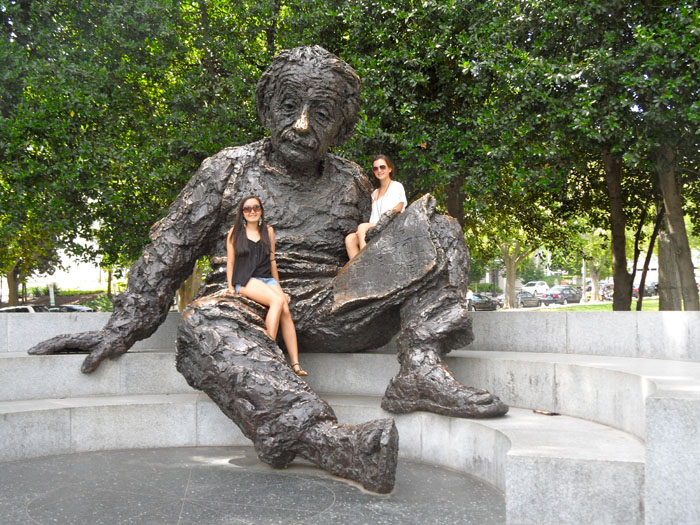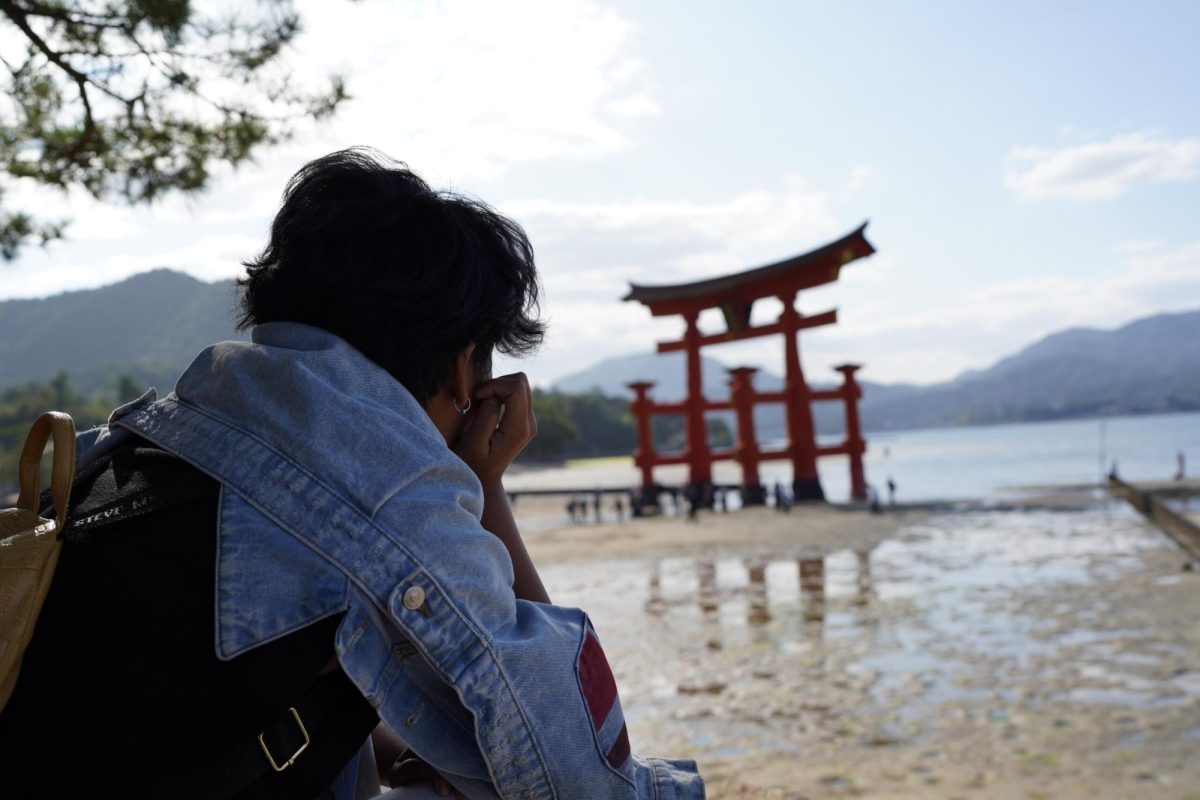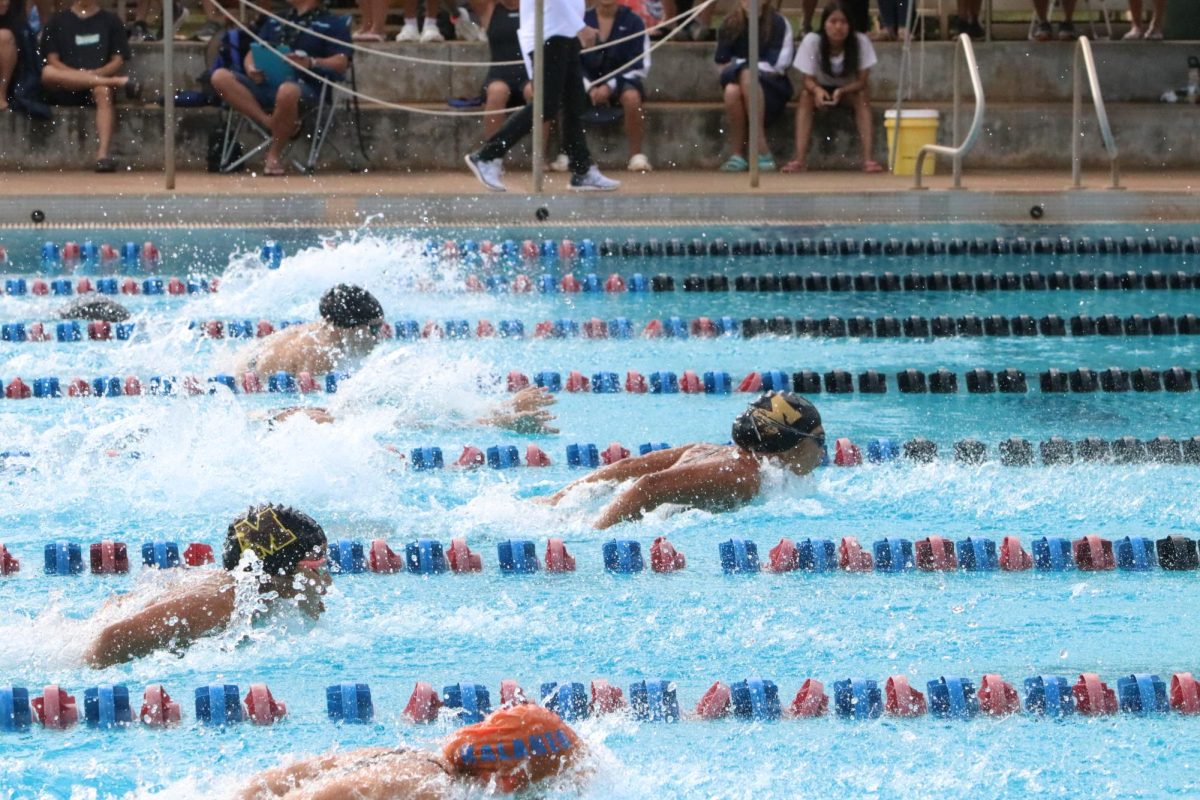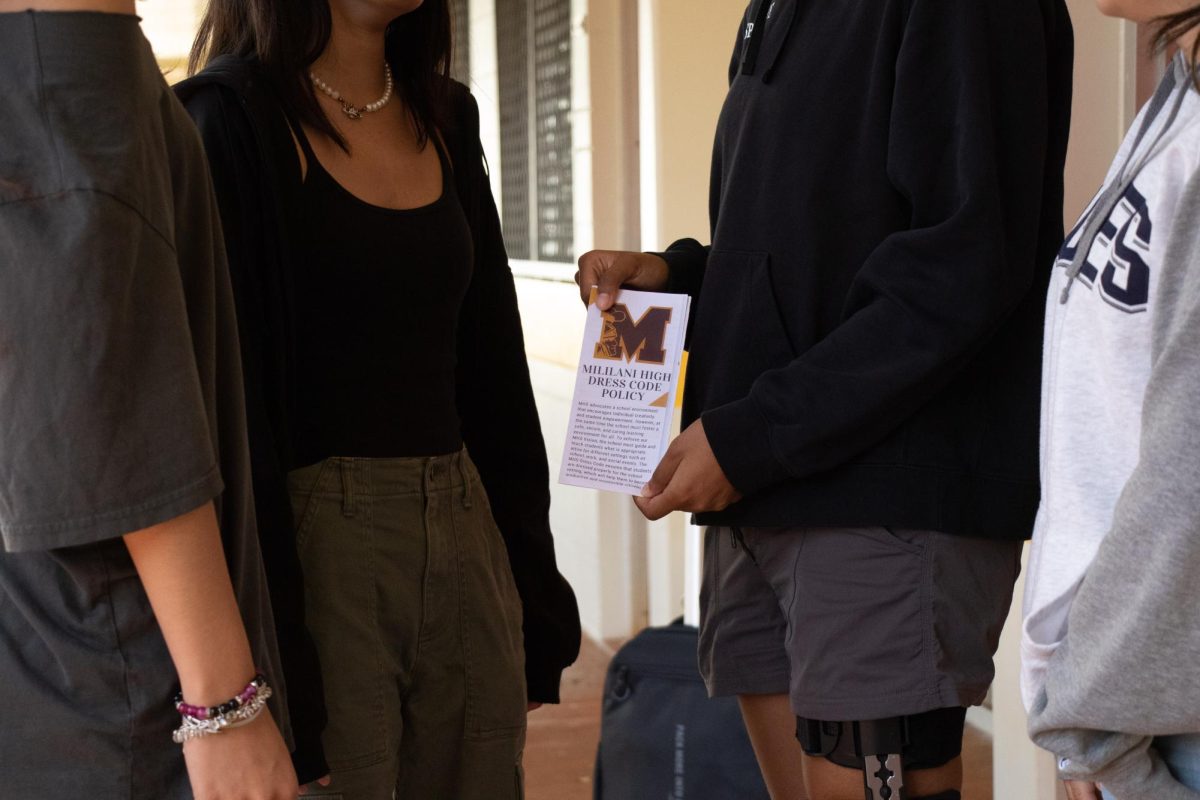Pros and Cons of Online School
(L-R): In addition to competing, 13th place documentary winners Seniors Megan Madeira and Alohilani Nonies had the opportunity to tour around Washington, D.C.
December 6, 2020
2020 has been dubbed a bad year for many, and most of the disappointment for the year comes from the isolation in hopes of keeping communities safe. School is a place to learn, and that includes learning social skills, communication, and the ability to physically interact with other people. On the other hand, Hawai’i has consistently been one of the least infected states in the US, up by 337,000 infected people when compared to Ohio, and has kept COVID-19 numbers relatively low. There have been many reasons supporting both the return to schools and the continuation of online learning. Many people have differing views on what is more important to them. Either way, something important is sacrificed, and ultimately it should be up to what is best for the specific community involved. Online learning is less effective then in person, and in terms of the entire situation, the state needs to start returning things back to normal, and must do so in a way that is fit for the safety and agreement of others.
Of course, public health and safety should be the top priority, but what is safe enough? Should we wait for the case counts to lower to zero? The problem with going back, especially in Hawaii, is that there are many multigenerational families being put at risk. One child in school is all it takes for the virus to spread to other students, who bring it home where they may have grandparents or very young siblings, who are at higher risk of getting long lasting effects. With the right precautions, this chance could be lessened; however, it’s hard to test without immediate danger. These testing measures still contain risk because we get one shot to make it work. If the test doesn’t work, the state will go on lockdown again, which might pull the economy into a state that takes years to get out of, and get even more people infected. Even though most students are learning at home, Mililani High School has recently reported an individual testing positive. This gives us reason to believe that it wouldn’t be safe for an immediate push of students to come back right away.
In regards to education, being in-person is better. There is a higher level of understanding between teachers and students, and students would be maturing and learning how to adapt to difficult situations. Many adults have lost jobs, worked from home, or had to change normal procedures due to the pandemic, and this is a great opportunity to teach young adults how to be flexible and the essential foundation of the economy. Just avoiding a problem will not fix anything; the states have been in repeated lockdowns and if there is a need to extend them, then something isn’t working. Not only that, the public should know that there is always going to be another “surprise” with any action they choose to do. By shutting down and not coming up with an actual solution, the economy is seriously failing. The state’s debt continues to increase each year, and there is already too much to pay off. Additionally, students need the social skills that school helps them develop to be successful in the working world. Being able to communicate effectively with others is imperative in most jobs. Furthermore, studies online have shown a higher rate in teen suicides and domestic violence. One of the easiest ways for these types of problems to be reported is through teachers, who can notice behavioral changes in students. Due to everything being online, it is now much harder for teachers to make personal connections with students and report possible issues to someone who can help.
The best solution would be to come with a plan to get students back into physical school, and to run it by the Board of Education, the school officials, teachers, and parents, so that everyone would be in agreement that it is as safe as it can be. Overall, it really comes down to the students following through with the distancing guidelines and rules.
If the public also supports continuing to work online, then are physical schools still necessary? Taking them down would save a lot of money from the government that could be used for other things. The extra money left over could go into funding for the families with trouble accessing the internet, allowing them to also receive equal learning opportunities as well. Teachers also could instead work from home, giving them more convenience in their schedules. There are also more teaching opportunities online as well. In math and science, other countries like China rank higher than the US, so why not pay for a better learning experience? Technology gives people the opportunity to communicate with anyone from around the world. Why not use it to the best advantage? Some argue against returning to school because after all, if the only benefit of in-person learning is social development, isn’t the danger of spreading COVID-19 greater? If so, then why not pay money for an education outside of the US? Even paying private teachers instead could also be an option, after all, it’s more convenient and more efficient for the student. The best way to solve this is to work out a way to return back. Instead of continuing to waste money on nearly empty schools and learning less hours regardless of being online in a more convenient location, the community should work out a plan that would be safe and beneficial to all students who need an education to get a stable job.
Safety and education is important, and online learning should provide both. If health is truly important, there needs to be a long term perspective for the benefit of students. It is only going to negatively affect them if they don’t get the information they need to be successful in their later careers. The safest option for now and the future is to reach an agreement with the whole community on how to return to school without putting anyone in danger. The realistic situation is that people will be affected by the virus. It’s not guaranteed that everything will work out perfectly, and in complete honesty, society cannot stop for things that could go wrong. However, it’s the responsibility of the community to work together and figure out a safe plan instead of waiting for things to get better.




